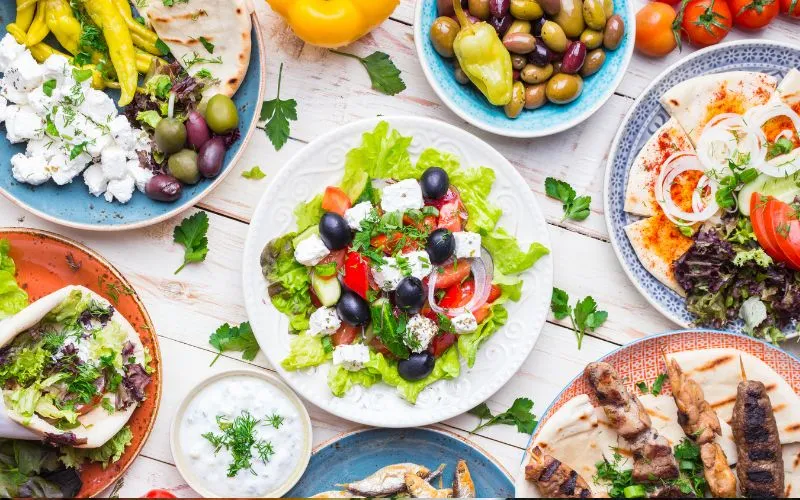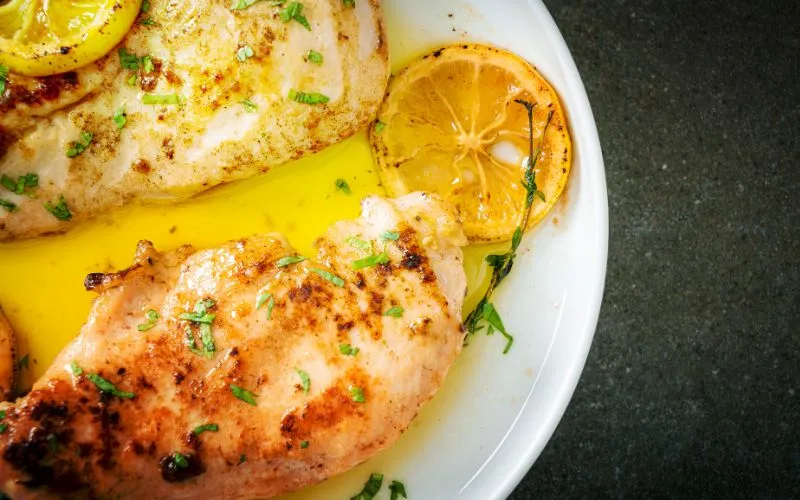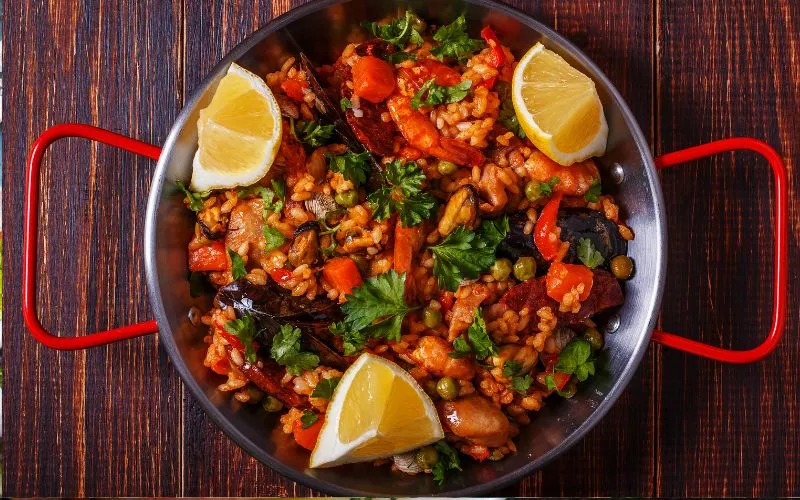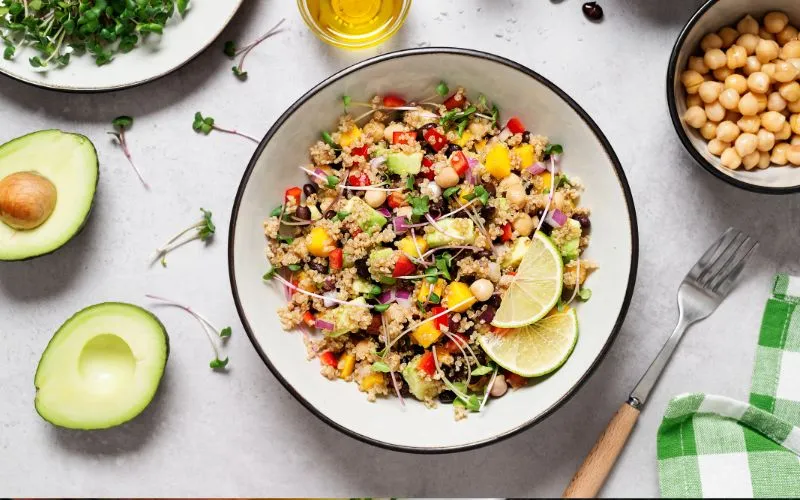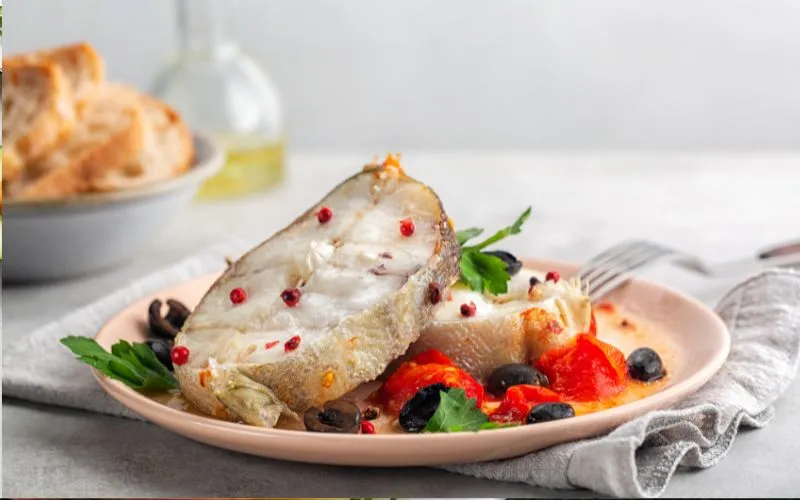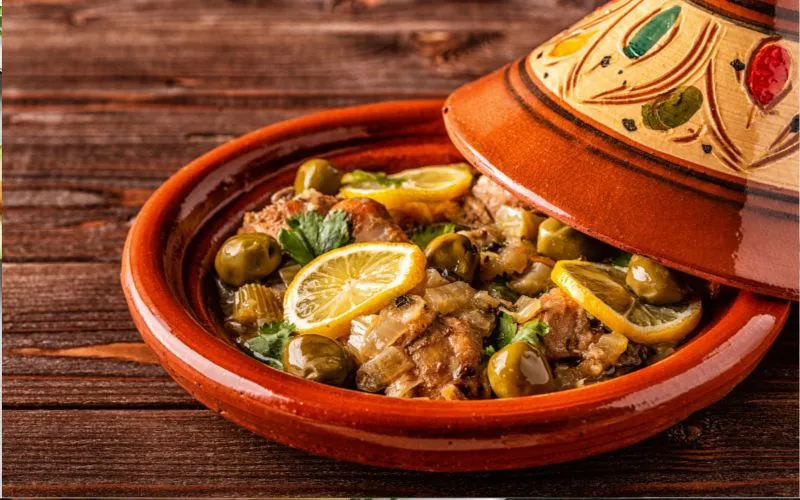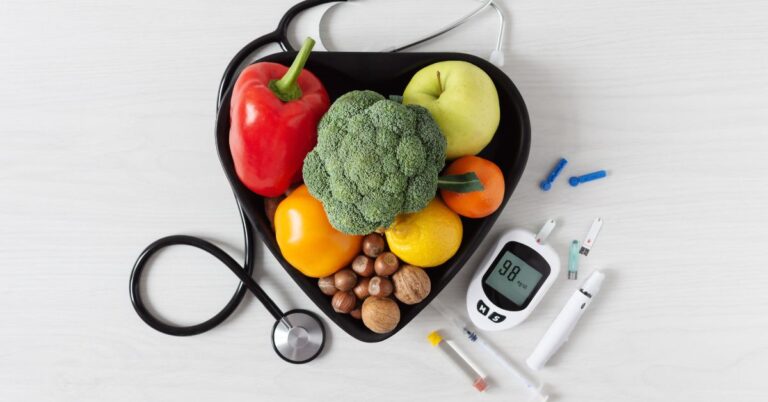The Mediterranean diet, renowned for its many health benefits, emphasizes consuming fruits, vegetables, whole grains, legumes, and seafood. It incorporates various flavors derived from fresh herbs, spices, and the liberal use of olive oil. Here are five delightful dinner recipes that embody the heart-healthy principles of Mediterranean cooking, ensuring nourishment and satisfaction at your dinner table.
Greek Lemon Chicken with Olives and Herbs
Juicy chicken breasts marinated in lemon and olive oil, sautéed with olives and fresh herbs and topped with feta cheese for a zesty, flavorful Greek-inspired dish.
Ingredients
- Chicken breasts
- Olive oil
- Lemon juice and zest
- Garlic
- Olives (Kalamata or green)
- Oregano and thyme
- Salt and pepper
- Cherry tomatoes
- Feta cheese
Recipe:
- Marinate chicken breasts in olive oil, lemon juice, zest, minced garlic, chopped olives, and a dried oregano and thyme blend.
- Season with salt and pepper.
- Sauté in a skillet until golden and cooked through.
- Add cherry tomatoes for the last few minutes until they soften.
- Serve hot, garnished with crumbled feta cheese and additional herbs.
- This dish highlights the simple yet robust flavors typical of Greek cooking.
Seafood Paella with Saffron and Seasonal Vegetables
A classic Spanish paella infused with saffron, brimming with various seafood, and mixed with vibrant seasonal vegetables for a colorful and aromatic feast.
Ingredients
- Olive oil
- Onions, garlic
- Bell pepper, tomatoes
- Saffron threads
- Rice (short grain)
- Seafood mix (shrimp, mussels, clams)
- Chicken stock
- Peas
- Lemon wedges
- Parsley
Recipe
- Heat olive oil in a large skillet or paella pan.
- Add finely chopped onions, garlic, and diced bell peppers, cooking until soft.
- Stir in chopped tomatoes and a pinch of saffron, cooking until aromatic.
- Add rice and stir to coat with the veggie mix.
- Pour in chicken stock and arrange the seafood over the top.
- Cover and simmer until the rice is tender and the seafood is cooked.
- Garnish with peas, chopped parsley, and lemon wedges for a bright, flavorful dish.
Quinoa Tabbouleh with Chickpeas and Feta
A refreshing and nutritious salad combining cooked quinoa, crisp cucumbers, tomatoes, and chickpeas tossed with lemon juice and olive oil and garnished with feta cheese.
Ingredients:
- Quinoa
- Cucumbers
- Tomatoes
- Red onion
- Chickpeas
- Fresh parsley, mint
- Lemon juice
- Olive oil
- Feta cheese
Recipe:
- Cook quinoa according to package instructions and let it cool.
- Combine finely diced cucumbers, tomatoes, and red onion with cooked chickpeas in a large bowl.
- Add chopped parsley and mint for freshness.
- Dress the tabbouleh with olive oil and lemon juice, then toss well.
- Season with salt and pepper to taste.
- Serve chilled, topped with crumbled feta cheese.
- This refreshing salad pairs wonderfully as a side or a standalone meal.
Italian-style Baked Cod with Tomatoes and Olives
Tender cod fillets baked with a medley of cherry tomatoes and olives, flavored with garlic and fresh basil, embodying the simplicity of Italian cooking.
Ingredients:
- Cod fillets
- Cherry tomatoes
- Olives
- Garlic
- Olive oil
- Basil
- Lemon slices
Recipe:
- Preheat your oven.
- Arrange cod fillets in a baking dish.
- Scatter halved cherry tomatoes and olives around the fish.
- Sprinkle minced garlic and drizzle with olive oil.
- Add fresh basil leaves and season with salt and pepper.
- Place thin lemon slices atop each fillet.
- Bake until the fish is flaky and tender.
- This simple, one-pan dish emphasizes the fresh flavors of the Mediterranean with minimal effort.
Moroccan Chicken and Vegetable Tagine
Slow-cooked chicken thighs with a rich mix of carrots, zucchini, and bell peppers, spiced with ras el hanout and served in a traditional Moroccan tagine.
Ingredients
- Chicken thighs
- Olive oil
- Onions, garlic
- Carrots, zucchini, bell peppers
- Tomatoes
- Ras el hanout (Moroccan spice blend)
- Chicken broth
- Dried apricots
- Almonds
- Cilantro and parsley
Recipe
- In a tagine or large pot, heat olive oil over medium heat.
- Brown the chicken thighs with chopped onions and minced garlic.
- Add sliced carrots, zucchini, bell peppers, and diced tomatoes.
- Sprinkle with ras el hanout and pour in chicken broth.
- Cover and simmer until the chicken is cooked and the vegetables are tender.
- Stir in dried apricots and sprinkle with chopped almonds for sweetness and crunch.
- Garnish with fresh cilantro and parsley before serving.
These recipes showcase the Mediterranean diet’s versatility and rich flavor palette, proving that healthy eating can be delicious and exciting. Each dish brings unique nutrients and benefits, making them perfect for a balanced dinner without compromising taste.
Emphasis on Heart Health
The Mediterranean diet is widely acclaimed for its cardiovascular benefits. High in monounsaturated fats from olive oil and nuts, this diet helps reduce cholesterol levels and lower the risk of heart disease. Each recipe above features ingredients like olive oil and nuts, which are staples in promoting a heart-healthy diet.
Rich in Dietary Fiber
Meals like the Quinoa Tabbouleh and Moroccan Chicken Tagine are loaded with vegetables and whole grains, providing an excellent source of dietary fiber. Fiber aids in digestion helps maintain blood sugar levels and can keep you feeling full longer, aiding in weight management.
Antioxidant-Rich Foods
The use of fresh herbs, spices, and a wide array of vegetables contributes not only to the unique flavors of Mediterranean cuisine but also offers a boost in antioxidants. These substances help combat oxidative stress in the body and play a role in cancer prevention. Dishes such as the Seafood Paella and Greek Lemon Chicken are excellent examples of meals rich in antioxidants.
Promotes Longevity
Studies have shown that the Mediterranean diet may contribute to a longer lifespan by preventing the onset of chronic diseases such as type 2 diabetes, high blood pressure, and obesity. The diet’s emphasis on fresh, wholesome foods, minimal meat intake, and a high quantity of olive oil and fish creates a balanced and healthful eating plan that promotes overall well-being.
Sustainable Eating Practices
The Mediterranean diet also encourages sustainable eating practices by prioritizing seasonal and local foods. This not only supports local farmers and reduces the carbon footprint associated with food transport but also ensures that the food is at its peak flavor and nutrition.
Social and Cultural Elements
Beyond just food, the Mediterranean diet encompasses a lifestyle that emphasizes social interactions and shared meals. This aspect of dining is seen as essential to the enjoyment of food and mental health. Preparing and sharing a meal like Italian-style Baked Cod or any of the dishes listed can create bonding experiences and foster community and well-being.
Easy Meal Planning
One of the great advantages of the Mediterranean diet is its simplicity and flexibility, which can greatly ease the stress of meal planning. Most ingredients are easily accessible and can be mixed and matched to create healthy meals without much effort. For example, staples like olive oil, garlic, tomatoes, and herbs can be used in countless combinations, ensuring that meals are nutritious, varied, and exciting.
Conclusion
Embracing Mediterranean diet dinner recipes offers many benefits that go far beyond just physical health. It encourages a holistic approach to life that includes enjoyable and sustainable eating habits, a strong sense of community, and an appreciation for the simple joys of fresh, wholesome food. Whether you want to revamp your diet or add some healthy variety to your meals, the Mediterranean diet offers a flavorful and fulfilling path to better health and happier living.

